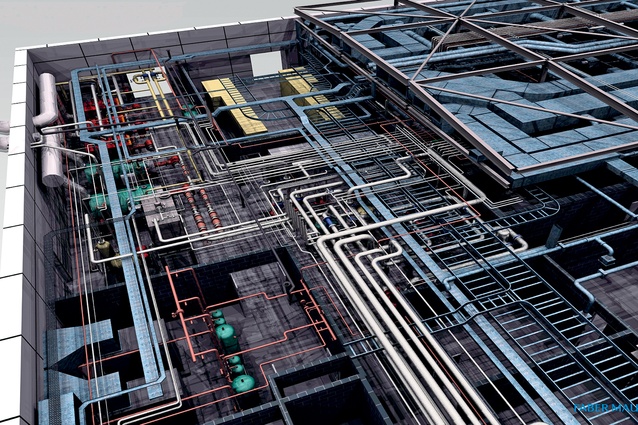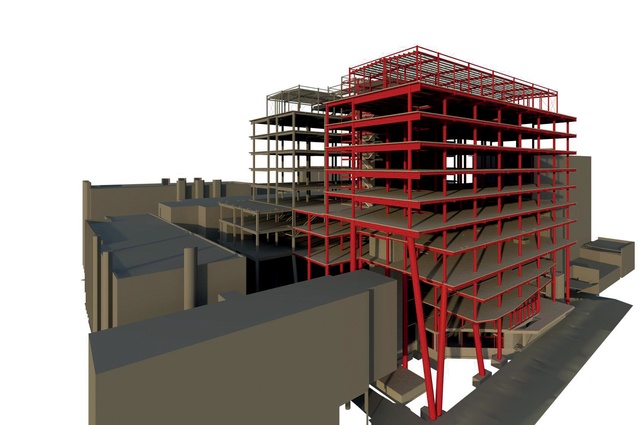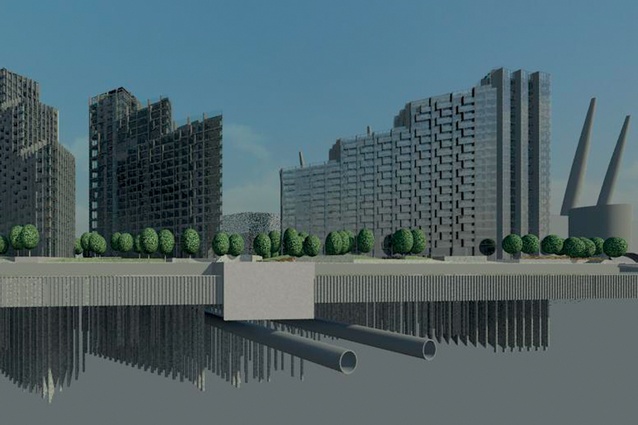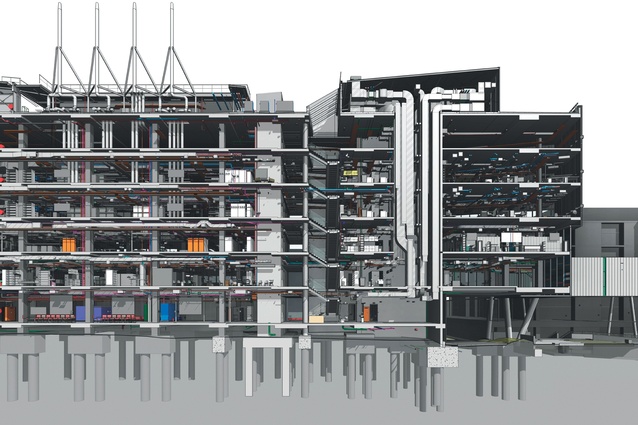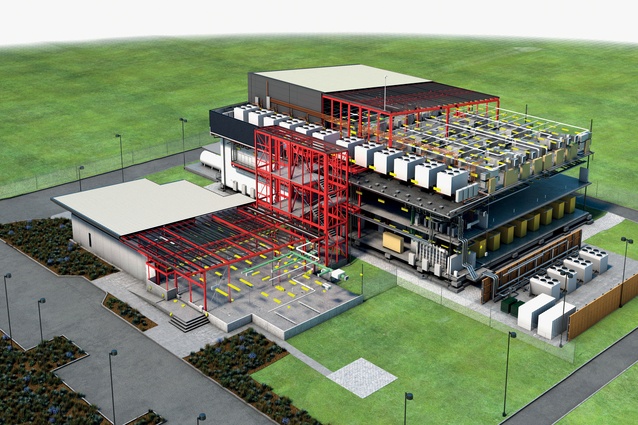BIM: the future is now
David Philp is a rather busy man, with a duel role as as the head of BIM for the UK BIM Task Group, while also working as AECOM's BIM director for Europe, Middle East, Africa and India (EMEA and India). Justin Foote of Progressive Building chatted with Philp about the journey of the programme in the United Kingdom, where BIM technology is at today, and the take-up of BIM in New Zealand and abroad.
Progressive Building: Can you give us a bit of an outline of what it is you do for the government back in the UK?

David Philp: I’m the head of BIM for the UK BIM Task Group, which was set up in 2011 to help the UK government make sure that the mandate for what we call UK Level 2 BIM by 2016 is going to be realised. So we’ve had an ambitious, four-year programme to try and build the tools, processes and standards to work with our government departments to unlock the value proposition of digital working.
PB: And how has that journey been?
DP: We’ve essentially gone from nothing to where we’ve got about NZ$20 billion of central government Level 2 projects coming through the pipeline.
PB: That seems a staggering amount of money in such a short time. The uptake must have been phenomenally positive?
DP: It has been very well received by industry, that’s true. The journey thus far has very much been a partnership between government and industry; and that’s been the key role of the task group, to bring parties together. A large part of that success has been the creation of what we call our BIM 4s – BIM 4 SME’s, BIM 4 Manufacturers and so on – as well as a working group under the name of BIM Regional located throughout the UK to work with people to help them understand the need for BIM and the benefits for them from coming on board.
So I think it’s been a great example of government working in partnership with industry. I also think it’s really helping to reshape our industry. You imagine for young people thinking about a career in construction, it’s much more appealing. It’s technologically advanced. It looks more innovative and I think one of the things that it’s doing is it’s starting to show there’s lots more jobs out there. It’s showing young people that actually there are great career opportunities in construction from engineering to the world of BIM and digital construction.
PB: What were the stumbling blocks to getting the programme off the ground?
DP: As with any paradigm shift, the initial reservations usually were centered around the need for investment. So what we set out to do was to work with the supply chain to show them where the value proposition was; so very quickly we were able to address those initial concerns. This is as much a change programme as it is anything else, so our approach was one of trying to understand behaviours and ways of working and then to show through example how an integrated, collaborative approach pays dividends.
What was essential in the beginning was strong leadership. Having the government on message right from the beginning was critical. We’ve had some top politicians such as Francis Maude Minister for the Cabinet Office talking about whole-sector change, putting the UK at the vanguard of digital construction. That level of leadership support has been great because it gives consistency for the supply chain and it fosters capability. At the same time there are supply chains in the UK who have said ‘what’s the cost of not doing this?’ As a nation, if we don’t become more efficient, there are other countries out there that are on a similar drive for more and better productivity.
PB: You’re just coming to the end of your trip to New Zealand, where would you say we were placed along the BIM journey?
DP: We have established a really good relationship with a number of government departments over here and they’ve been really great in terms of reaching out and joining the dots, so from a UK-NZ partnership perspective we’re working well together. I believe New Zealand has made some great ground in terms of the journey and we’re seeing some amazing things starting to happen, especially around geo-spatial data and with some early adopter clients that are doing some amazing things in terms of open data coming together. If someone was to ask how far behind the UK New Zealand was, I would have said about a year, year and a half.
Having said that, we’ve examples on our trip that have been as good as anything we’ve seen in the UK, so there are some pockets of real excellence in New Zealand that we need to highlight and if you can scale that up across the country it would lead to some amazing stuff. There’s a real sort of desire to do BIM within New Zealand, with the people we’ve met, so now it’s about how do you get better consistency, how do you drive for ability within the country.
PB: One of the aspects that has hamstrung the New Zealand building and construction industry is access to raw materials. It’s more expensive to build in New Zealand because much of the materials need to be shipped in. I guess the beauty of BIM is that it is a technology rather than a tangible product, in terms of its benefit to industry.
DP: Absolutely. These are products working entirely on cloud based technology, so there are no limitations and actually, your BIM is fantastic in terms of those things you mentioned such as looking at procurement strategies, looking at logistics and how you model that, so actually it can help ameliorate a lot of those cost problems that you’re talking about as well. Another benefit and one that is, I think, key for New Zealand, is looking at design for manufacture and assembly and how BIM can help make them a lot more sustainable and deliver solutions around that.
PB: So where are we at, in terms of the technology, compared to 5-10 years ago?
DP: The technology around BIM has been kicking about for probably at least half a century but if you went back to 50 years ago, you’d have to be a man with a dicky bow and two PhDs using a super computer called HAL that took some punch cards to have actually done anything. Now, a lot of the software comes in viewing platforms and the very basics of them are actually free.
It’s become much more accessible and much more scalable. You don’t need a super computer; it can run on the most basic of machines. It can, in a lot of cases, run on mobile devices. The cost of it has come right down, it’s accessible to most and in the UK we’re seeing a big uptake from the SME marketplace. They’ve been quick to adopt and they’ve been very agile in using it, you know bringing new value propositions and actually doing transformational pieces as well.
PB: Obviously BIM makes sense for an organisation such as the government, but are you seeing it filtering down, or being of use to the one-man-band outfit?
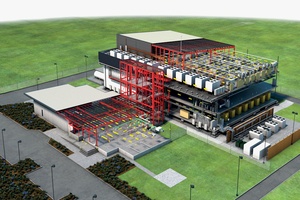
DP: Most definitely. You know, these ‘man with a van’ micro-enterprises have got to be very efficient because they don’t have the support of big backing offices. You look at how they’re doing things just now and well pretty much they do it digitally. They’re using their mobile phones and they’re online and a lot of tools we’re talking about are very appropriate for small enterprise. In fact, I see them getting the most value out of it because they’re people that unlock efficiencies; they’re more adaptable to change as well.
I’ll give you an example; about two years ago I added an extension to my house and as you would expect I built a little BIM model of what I wanted and the builder said: ‘How do I get the software?’, I told him it’s a free tool and he went and downloaded it and he was using it to coordinate, to make material ordering decisions, then when he brought other trades people in as well he downloaded the model himself and he was showing people the model and he was spinning it about and everybody was actually collaborating round about the model. It’s like anything, get people together and show them how to make smart decisions and they’ll crack on with it.
PB: So small enterprises have shown themselves to be early adopters and government is on board, what about from a generational sense, is there wide acceptance?
DP: Well, not surprisingly, Generation Y gets this stuff. You know, they’ve grown up with Minecraft, they build models, my nine-year-old can build this stuff. When she comes into construction, hopefully she comes into construction because it’s a great career, she’ll already be coming from a 3D-rich environment. These kids, they’re already working with digi-tools, so what those of us who have already put decades into the industry have to ensure is that we leave that legacy for them to come into.
My father’s still in construction, although he’s getting towards retirement and he just gets this stuff. He’s gone: ‘Wait a minute, I’ve got all these problems I’ve had for the last 30-40 years of my career that I can now solve, I’m working more collaboratively, I can make better, more rapid decisions’. So yeah, I don’t think there’s an age barrier with it but young people really get it.
PB: What about the technology itself, in terms of where we are. Do you see the technology further evolving or is it at a point now where it is doing exactly what its intention is?
DP: In terms of maturity of where BIM is at this moment in time, I’d say it’s coming out of puberty. You know, it’s still got a few spots on and that sort of thing. I think we’re almost there and as it comes into adulthood we’re starting to get real value out of it, but this will continue to grow and grow. We will come to a point where what BIM is at this moment in time – digital engineering, digital construction – will become business as usual. It will become the norm but the value proposition out of data will continue to grow. We’ll start to see more disruptive change in what we’re doing and the word that I would use, we’ll start to see much more automation of process. You know data-driven design, pieces like that I think will continue to grow.
PB: And how far away is that in your estimation?
DP: That’s a good question. I think by the next couple of years in the UK, 2016/18 we’ll start to see what we consider the Level 2 piece becoming more business as usual. In the UK we put our next marker in the sand, which is called Digital Built Britain. Back in February our politicians launched the next trajectory for this concept for Level 3 in a Digital Built Britain, which we’ll start to think about smart telemetry and performance-based data within our assets.
PB: Is that to be implemented from 2018?
DP: Well, we’ll start building in the background, all the standards and everything but it’s taken us the best part of four years to get to level 2, it will probably take us about seven or eight years to get towards level 3 despite the fact that we might bring some of the initiatives forward a bit but the whole idea behind Digital Built Britain is that we will build what will basically be the economy for the construction industry.
We can support improving delivery, operation, and the services per se; it’s a big, big part. I would say Level 2 BIM is doing what we should have been doing, only doing it digitally, Level 3 I think will be that game changer, it’ll start to think about things like automation, start to think about the whole internet of things as well – smart cities, smart grids.
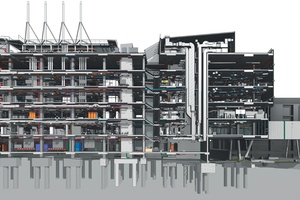
PB: So how does a country like New Zealand play into that, in terms of a collaborative global stage?
DP: I think New Zealand is very much part of that. I think you’ll get to the point, if you continue the journey, where you’ll want to be able to export your skills. You’ve got to do what you’re doing internally, you know the support, you’ve got some massive cap-ex projects that are going on. There’s a huge opportunity for New Zealand to export the skills learned from those projects as well. I think it’s a great opportunity for New Zealand to continue the growth in their efficiency, there’s quite a lot of rebuilding programmes going on but ultimately exporting it. You look at Christchurch, beyond the 10 years of the rebuild wouldn’t it be great if a by-product of that was to actually be in a position to continue to export these services beyond where you’re doing just now.
So how do we ensure that happens; is it a government-industry partnership? Is it government led or is it grass roots led?
PB: So how do we ensure that happens; is it a government-industry partnership? Is it government led or is it grass roots led?
DP: I think it’s appropriate that it’s both. Having clear leadership from the top and clear targets definitely helps. That said, it also needs support coming up from the bottom, starting with the supply chain. What I would say though, one of the of things we’ve learned, is the biggest danger is you get bogged down in a technical discussion, when with BIM it’s very much about behavioural change programme as much as anything. So I think look at behaviours, as well as the technology, and how you can start to change that. In the world of digitisation, we’re heading towards a world of automation. We can’t stop that; it’s going to happen. People can’t stick their heads in the sand and think this digital thing is going away. Even construction is going to be very much part of this.
If you think about the industrial cycles over the years from the power loom to where we are now, every industry has kind of got into the world of digital working and the term I use is ‘hyper-modernisation’. And what we’re seeing, if you look around the world at this moment in time, is that BIM is being adopted around the world. We’re seeing governments providing financial stimulus and great mandates alongside that and the big thing is project delivery methods are changing, so it’s probably not a case of if but actually of how fast.

